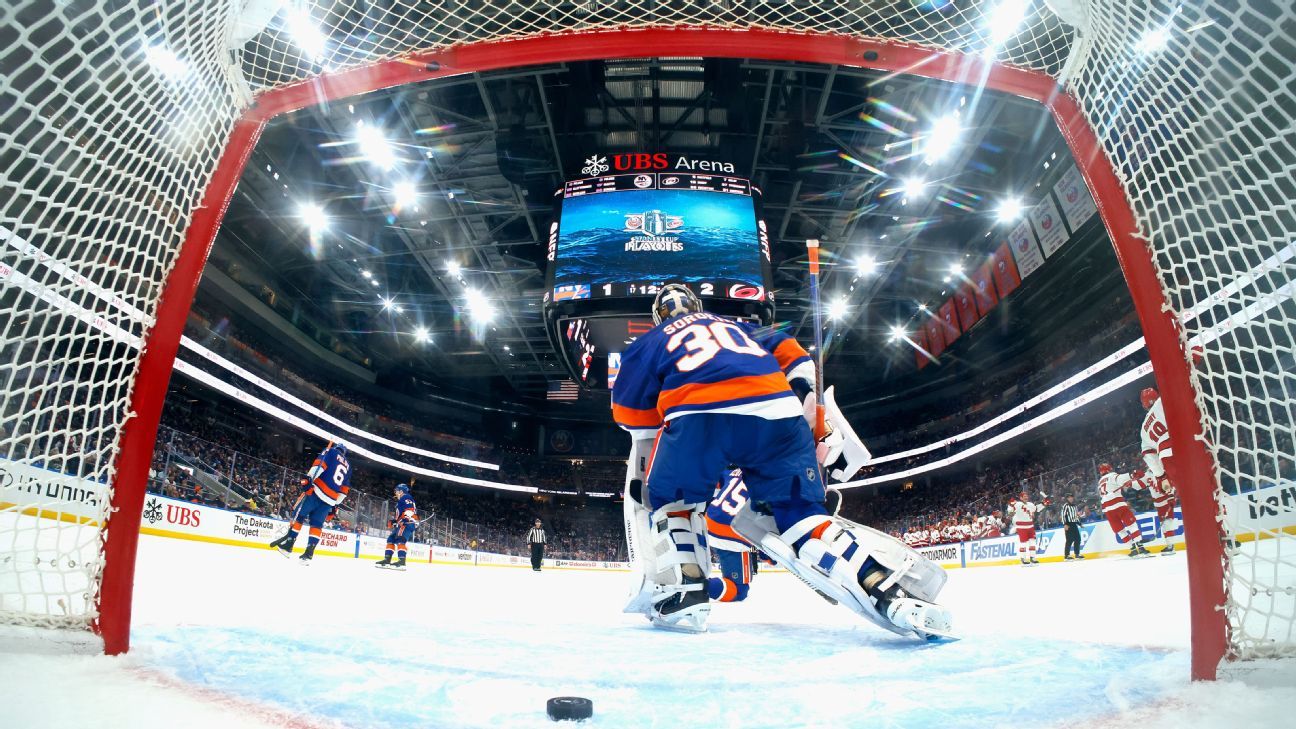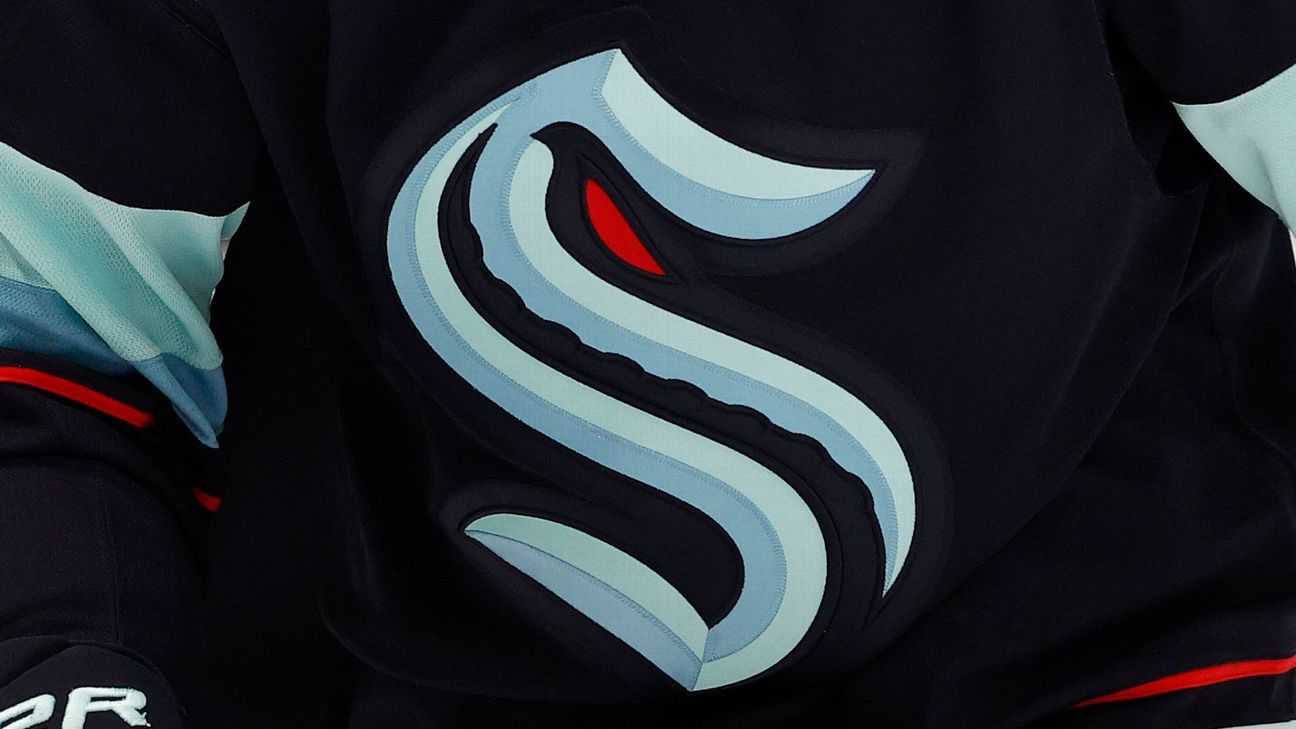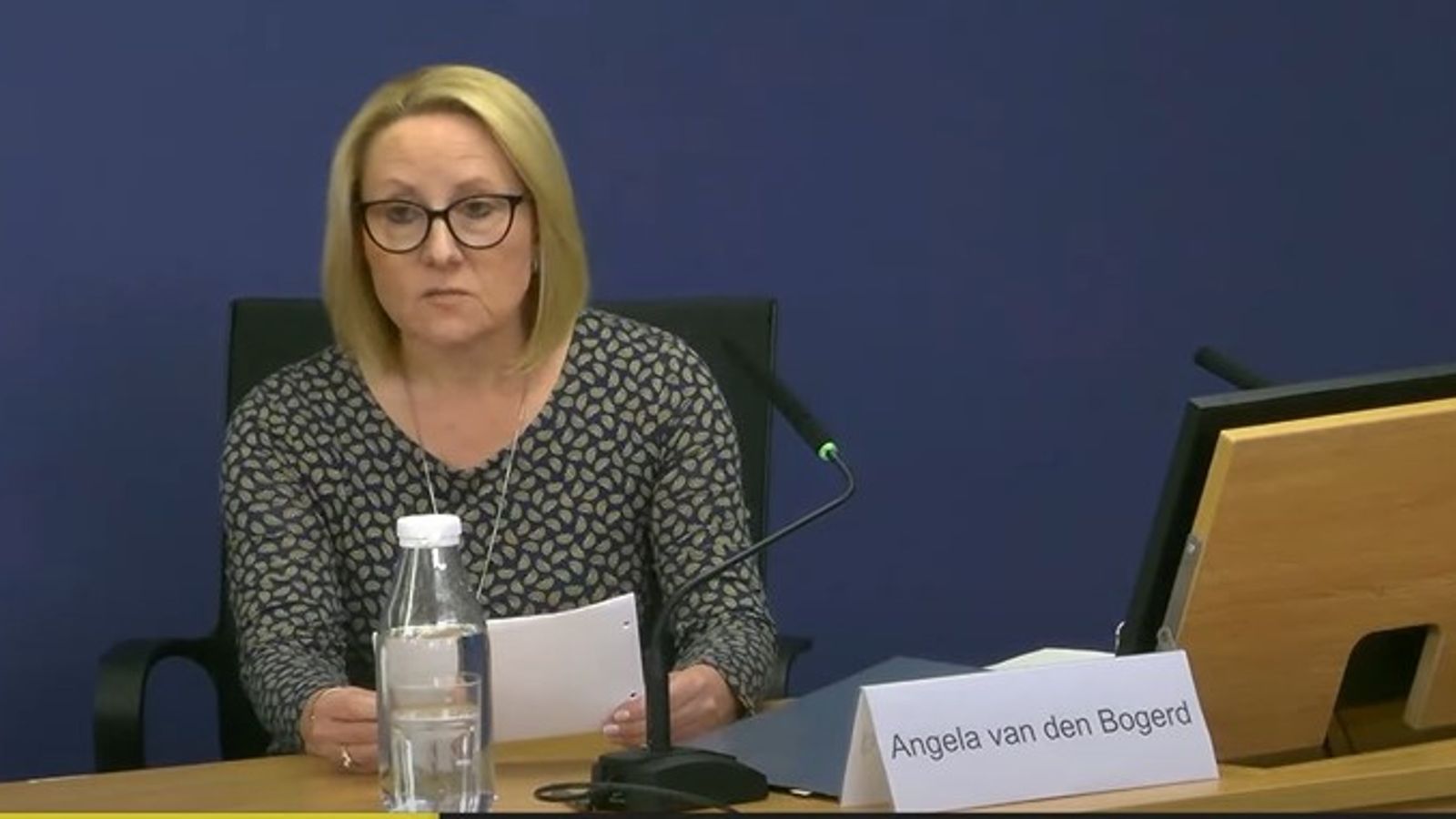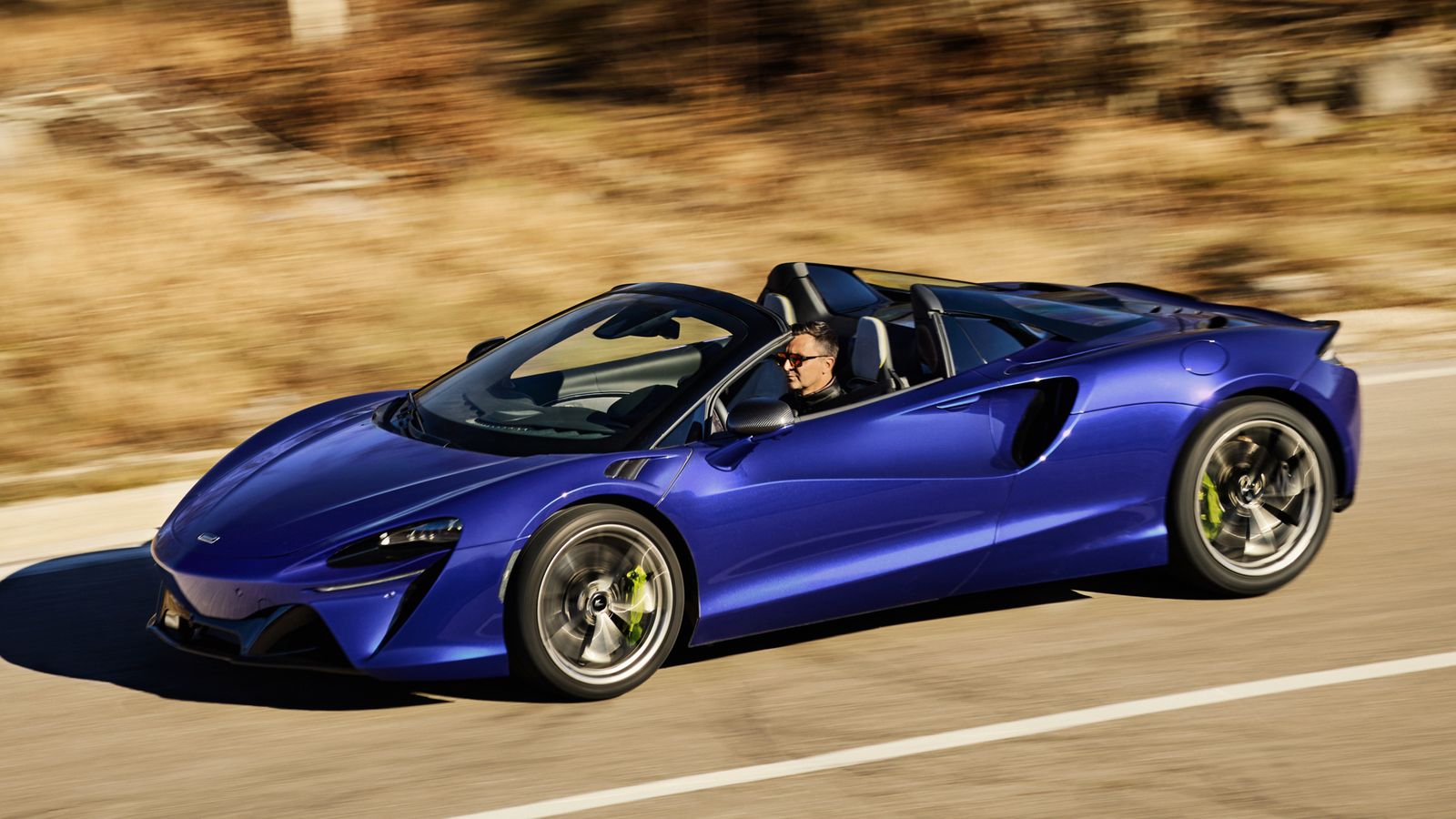With a month of spring training in the books, people inside baseball are starting to form their opinions on players. Who’s real; who’s not. Who changed; who didn’t. Who matters; who doesn’t.
It felt like the perfect time to survey more than 30 players, managers, coaches, general managers, scouts, evaluators and other personnel to differentiate small-sample-size mirage from genuine breakout. And in doing so, it informed plenty of other areas in need of analysis.
So I decided to don a few different hats here. This is for the fantasy players, the gamblers, the prospect lovers, the casuals, the wannabe scouts and executives, and especially those who love looking back at predictions and snitch-tweeting @OldTakesExposed.
Fantasy hat
My friends in the Phase 3 Fantasy Baseball League, around since 1991, read every word I write this time of year because they love bidding up the players I like. I hate them for it, but my love for you, dear reader — and for a paycheck — brings me back once more. And so here are some late-round gems who follow one undervalued early-round pick.
Corey Seager, SS, Los Angeles Dodgers: He was amazing in the postseason. He picked right back up this spring and has been among the most impressive hitters in the Cactus League. It would surprise no one if Seager, who turns 27 in April, winds up as the most sought-after free agent this winter.
Alejandro Kirk, C, Toronto: As good of a caricature as he is — Kirk is built like a Weeble — he’s a better hitter. One manager who saw him this spring said Kirk, 22, shouldn’t just make the Blue Jays’ roster. He should be their starting catcher.
Ty France, 2B, Seattle: France has second-base eligibility, and considering the paucity of bats at the position, he is a sneaky-great value play. Evaluators always have believed he could hit, and he’s been over-the-top good this spring.
Josh Rojas, 2B, Arizona: The Zack Greinke trade could turn out to be a massive windfall for the Diamondbacks. Corbin Martin is back from Tommy John surgery and throwing 98. J.B. Bukauskas is looking like a dominant late-inning reliever. When the DH comes to the NL, Seth Beer will drop into the cup. First up is Rojas, a Swiss Army type whose bat has looked extraordinary and could be Arizona’s latest find.
Jameson Taillon, SP, New York Yankees: Coming off his second Tommy John surgery, Taillon is not without risk. But with a reimagined delivery that shortened his arm stroke and engages his lower half, Taillon’s stuff, one evaluator said, looks as good as, if not better than, what he unleashed in his breakout 2018 season.
Logan Allen, SP, Cleveland: Allen arrived in the Trevor Bauer trade, and Cleveland’s pitching factory has done it again. This spring, Allen’s fastball has sat at 96 mph — more than three ticks above where he was in San Diego and harder than every left-handed starter in the big leagues in 2020 — and that may not even be the most impressive part of his evolution. Allen has added 11 inches of gloveside break to his slider this spring.
Michael A. Taylor, CF, Kansas City: Want stolen bases? Of course you want stolen bases. Especially ones from guys you might be able to poach for $1 in an auction. Taylor remains the physical presence he was in Washington: 6-foot-4, 210 pounds, ridiculously fast. Remember, in his last season with something resembling consistent playing time, he stole 24 bases in 385 plate appearances. Bonus: He’s raking this spring, too.
Ronald Guzman, 1B, Texas: The Rangers traded for Nate Lowe this past winter, only for Guzman to retool his swing and look like a completely different hitter. It’s true: Globe Life Field hasn’t played like a hitter’s park. But there may not be a stadium anywhere that can handle the sort of raw power Guzman provides.
Pete Fairbanks, RP, Tampa Bay: This is where real-life baseball knowledge can behoove you in fantasy. Nick Anderson, the Rays’ ace reliever, will be arbitration-eligible after this season. Relievers get rich in arbitration when they compile saves. As much as Anderson has pitched himself into the role, closing may not be a regular gig for him. Which leaves the door wide-open for Fairbanks to vulture some saves on top of his gaudy strikeout numbers.
James Karinchak or Emmanuel Clase, closer, Cleveland: Speaking of big strikeouts. Whoever wins this job — Karinchak is the favorite, but Clase’s 100 mph cutters transmogrify men into puddles — is a four-category monster. Cleveland’s closer is almost always a good bet, and with elite raw stuff, either is worthy of doing the job.
Gambling hat
Want to get rich? Well, this isn’t the place for it. But if you happen to meander into a sportsbook and need some knowledge, here’s a good start. (All odds from Caesars Sportsbook by William Hill.)
Shohei Ohtani, AL MVP, +5000: His bat looks elite. His arm looks back to normal. MVP voters love great stories, and Ohtani fulfilling his two-way destiny is a hell of a tale — especially at 50-1. An even bigger sleeper: Tampa Bay’s Brandon Lowe at +8000. He was the AL MVP in the first half of the shortened 2020 season. At 80-1, he’s a phenomenal value.
Juan Soto, NL MVP, +850: Three players are tied for the best odds in the NL: Soto, Mookie Betts and Cody Bellinger. Give me Soto. Sleeper: Jacob deGrom at +4000
Corbin Burnes, NL Cy Young, +5000: His stuff this spring looks incredible — and he’s barely even throwing his slider. Burnes has the same odds as Dustin May, who may not even make the Dodgers’ Opening Day roster.
Franmil Reyes and Jorge Soler, major league home run champion, +3000: Soler won the AL home run title in 2019, and at 25, Reyes is ready to break out. Sleeper: Lowe at +15000.
Atlanta, NL East champion, +140: Of all the division champs, Atlanta may be the best bet in terms of likelihood plus value. The Brewers, at +340, aren’t far behind. Sleeper: Kansas City at +4000. Not saying the Royals are going to win a very competitive AL Central. But the same price as Detroit, Arizona and San Francisco? That’s silly.
Los Angeles Dodgers, World Series champion, +350: Baseball is weird, the playoffs are a small sample, blah blah blah. If it’s Dodgers vs. the field, I may still take the Dodgers.
Sleeper: Toronto at +2200. Especially if Alek Manoah arrives sooner than later. Darker horse: Milwaukee at +5000.
Atlanta over 91.5, Baltimore under 63.5: Atlanta won 97 games in 2019 and finished on a 94.5-win pace last year. It added Charlie Morton and Drew Smyly, will get Mike Soroka back from Achilles surgery and will have a full year of Ian Anderson.
Baltimore won 47 in 2018 and 54 in 2019, and finished on a 67.5-win pace last year. The Orioles did nothing to improve this winter, and the arrival of top prospects won’t help much in a vicious division.
The Mets win 30 games before the Yankees, +170: The Mets go 39 games before facing Atlanta, then following that series have three at Miami and four against woeful Colorado. The Yankees do have seven games against Baltimore in April, then face Detroit, Houston and Washington before three more against Baltimore and four at Texas. But at -200, the value is bad.
Bo Bichette, major league hits leader, +2500 hits: He’s got everything you want in a hit king. Good bat-to-ball skills. Strong exit velocity. Low walk rate. If Bichette doesn’t tickle your fancy, Jeff McNeil at +3000 is a mighty good bet.
Freddie Freeman, over 171.5 hits: In 2018, Freeman had 191 hits. In 2019, it was 176. Last year, he was on a 197-hit pace. Freeman always rakes, and with the lineup that surrounds him in Atlanta, he’s going to see pitches to hit.
Front-office executive hat
There has been plenty of talk this spring on contract extensions, and there will be lots more in the coming months on trades. Here’s a taste of both.
Francisco Lindor, Carlos Correa, Javier Baez, SS: It’s amazing to think Puerto Rico produced three transcendent shortstops who were born within a year and a half of one another. They also happen to be the ones who have engaged in contract negotiations with their teams this spring, according to sources. This doesn’t mean Lindor, Correa or Baez will sign an extension. Just that they’re open to the discussions before they hit free agency in November. The other two mega-shortstops in the class of 2021, Corey Seager and Trevor Story, aren’t likely to ink extensions.
Joey Gallo, OF, Texas: The Rangers’ rebuild has started, and nobody on their roster carries as much present-day value as the 27-year-old. Texas could wait until the winter to deal him, but if Gallo is hitting like he has this spring — his five homers lead the Cactus League — it only makes sense to move him to a contender and add to a farm system that needs help. Kris Bryant, 3B, Chicago Cubs: If the Cubs falter, Bryant could find himself on the move come trade deadline season. In addition to Baez, the Cubs have talked with their other big free-agent-to-be, Anthony Rizzo, about an extension. But absent one, he’ll be on the market as well. Another Cub who could be popular: Zach Davies, whom Chicago acquired in the Yu Darvish deal with San Diego. And don’t forget the best hitter in baseball this spring, Joc Pederson, who can hit free agency.
Freddie Freeman, 1B, Atlanta: Freeman re-signing isn’t exactly a fait accompli, but the expectation in the industry is that Atlanta will take the savings from below-market deals with Ronald Acuña Jr. and Ozzie Albies and lavish them on the reigning NL MVP.
Josh Hader, RP, Milwaukee: So if Drew Rasmussen really is that good, and Devin Williams is anything like he was last year, and Brent Suter and Freddy Peralta and Justin Topa remain effective in the bullpen, could the Brewers look to move Hader, who has been the best reliever in baseball since his 2017 debut? Yes. Yes, they could. Considering Hader’s $6.675 million salary could grow to the $10 million range via arbitration, Milwaukee could move Hader after reaping his best years and use the spoils to build its next generation of talent.
Andrew Vaughn, 1B, Chicago White Sox: Vaughn hasn’t taken a big league at-bat, but that hasn’t stopped Chicago from trying to do with him what it did with center fielder Luis Robert, who signed a six-year, $50 million deal with two club options before his major league debut. Vaughn, chosen one pick after Bobby Witt in 2019, has been a revelation this spring and will only strengthen a lineup filled with players on long-term deals: Robert, Tim Anderson, Eloy Jimenez, Yoan Moncada — and before that, Chris Sale and Adam Eaton, whose club-friendly deals kick-started their rebuild. Thus far, despite engaging with Vaughn and Lucas Giolito, the White Sox haven’t been able to lock either down, according to sources.
Jose Ramirez, 3B, Cleveland: Ramirez’s long-term deal has paid enormous dividends for Cleveland — and it would love to do another, according to sources. Ramirez, 28, has resisted. Cleveland isn’t losing sleep over it. He remains under contract for this season at $9.4 million, with an $11 million club option for 2022 and a $13 million club option for 2023.
Lots of Kansas City Royals: Should the beasts of the AL Central do what they’re expected to, the Royals could find themselves out of contention at the deadline and with a bevy of possibilities to strengthen an already-excellent farm system. The big prizes: catcher Salvador Perez and Jorge Soler, both of whom will be free agents after 2021. Kansas City’s bullpen has some intriguing free-agent-to-be possibilities, too: Jesse Hahn, who was magnificent in 2020, and a couple of oldies-but-goodies in closer Greg Holland and Wade Davis, who has looked excellent and is likely to make the Opening Day roster. The Royals already have been busy this spring, signing Hunter Dozier to an extension and talking with Adalberto Mondesi about a long-term deal. Summer may prove even busier.
Starling Marte, CF, Miami: The Marlins are in a similar position to Kansas City: young, talented and perhaps a year away. Marte, for whom they dealt at the deadline last year, is by far their most desirable player, though the market for Adam Duvall could be decent, too, if the new ball suppresses power around the game and he remains a bopper nevertheless.
Kevin Gausman, SP, San Francisco: The available arms this summer could be grim, and Gausman is positioned as perhaps the best of the bunch — alongside Johnny Cueto, Anthony DeSclafani, Aaron Sanchez and Alex Wood, all of whom are under contract only for 2021. Another worth keeping an eye on, particularly if he can stay healthy: Seattle’s James Paxton. A wild card is Tampa Bay, which is so deep in starting pitching that it could deal all of its pending free agents — Chris Archer, Michael Wacha, Rich Hill and Collin McHugh — and still fill a rotation with young, dynamic arms.
Scouting hat
Plenty of young players have impressed evaluators this spring. Here are a few you’ll see this season — and a few more who will arrive in the coming years.
Nick Pratto, 1B, Kansas City: The 22-year-old Pratto, chosen 14th in the 2017 draft, lit up the Royals’ alternate site last year and has continued to crush this spring. Kansas City signed Carlos Santana to a two-year deal this winter, but with Soler potentially leaving via free agency, Santana could slide to the DH slot and open up first for Pratto in 2022.
Jonathan India, 3B, Cincinnati: The fifth pick in the 2018 draft, India has wowed the Reds this spring and should find himself in Cincinnati sooner than later. The Reds are so enamored of him they tested out third baseman Eugenio Suarez at shortstop Tuesday.
Adley Rutschman, C, Baltimore: The Orioles have seen this before — a pedigreed, switch-hitting catcher who has all the makings of a star. Baltimore is banking on Rutschman doing what Matt Wieters never could: turn into one. Evaluators are convinced it’s only a matter of time before the No. 1 overall pick in 2019 becomes the best catcher in the AL.
Mickey Moniak, CF, Philadelphia: Two years ago, Moniak was being called a bust. Now, amid an impressive spring, he is changing the tune of evaluators. “He should be starting in center field Opening Day,” one said of the 22-year-old, whose six hits this spring include two doubles, a triple and a pair of home runs.
Aaron Ashby, SP, Milwaukee: With an over-the-top delivery and a predilection for varying the timing of his delivery, the 22-year-old Ashby has impressed evaluators so far. His slider is an absolutely devastating pitch Ashby can throw for strikes and bury, and when coupled with a mid-90s fastball, Ashby — the nephew of longtime pitcher Andy Ashby — has been a breakout star this spring.
Riley Greene, CF, Detroit: For a 20-year-old, Greene has uncommon poise and presence and has positioned himself to be at the center of the next generation of Tigers. One evaluator thinks he could play — and play well — in the big leagues right now. Detroit will take its time and unleash its young pitching — Matt Manning, Tarik Skubal and Casey Mize, the No. 1 overall pick in 2018 — at the big league level before Greene (chosen fifth in what is looking like a generationally strong 2019 draft) and 2020 No. 1 overall pick Spencer Torkelson arrive.
Trevor Megill, RP, Chicago Cubs: Megill is an absolute giant, 6-foot-8 and 250 pounds, and with a fastball from the left side that sniffs triple digits, he’ll almost certainly pitch at Wrigley Field this season. Unlike those on this list before him, Megill is wizened: 27 years old, a Rule 5 pick in 2020 from the Padres and without much real projection left. He is what he is, and what he is may be good.
Willi Castro, SS, Detroit: The Tigers aren’t sure if the 23-year-old Castro is a shortstop long-term, but they are confident he can really hit. In 140 plate appearances last season, he hit .349, and this year will be a test of both his versatility to potentially switch to another position and ability to sustain a reasonable-enough semblance of production for a season that he positions himself alongside that Greene-Torkelson core.
Jarren Duran, CF, Boston: Never has Duran’s athleticism been in question. It’s simply been a matter of whether he’d hit at higher levels. His swing has been locked in all spring, and if Franchy Cordero doesn’t perform in right field, Alex Verdugo can slide back to a corner, where he played last season, and open up center as a Red Sox farm system that is slowly building excellent depth pays dividends.
Wander Franco, SS, Tampa Bay: The best prospect in baseball left major league camp with a titanic home run added to his résumé and aspirations of playing in the big leagues this season clearly on his mind. If Franco does at Double-A or Triple-A what he did at both Class A levels in 2019, the Rays won’t be able to deny him. Especially if he succeeds at second base and third base like he has every other challenge given him.
Fan hat
While it’s true I don’t root for any particular team, it doesn’t necessarily lessen the baseball experience. There are still plenty of things to enjoy watching. Here’s what I’d love to see in 2021.
Bobby Witt Jr. starting the season in the big leagues: Nobody has impressed more this spring than Witt, the 20-year-old Royals shortstop who was chosen with the second overall pick in 2019. The son of longtime big league pitcher Bobby Witt, he was the runaway choice of evaluators who were asked which player impressed them most this spring. Even though his minor league experience consists of 37 games in rookie ball, Witt, the evaluators concurred, is absolutely big league-ready right now. The choice isn’t nearly as easy for the Royals. They don’t want to rush a future star, particularly in a year expected to be ascendant but not necessarily playoff-bound.
There are service-time considerations, too, though it’s worth remembering general manager Dayton Moore tends to sneer at such things — and did so just last year by rostering perhaps his best pitching prospect, Brady Singer, on Opening Day. Would he dare do the same with Witt, particularly with shortstop filled by Adalberto Mondesi, perhaps forcing Witt to second base, where the Royals love Nicky Lopez’s glove? The likelier move is to start him at Double-A and let Witt hit himself to the big leagues, but that’s no fun. If he’s going to hit a 484-foot home run like he did earlier this spring, let it be at Kauffman Stadium.
Shohei Ohtani hitting: While I’m not quite certain what Ohtani will be as a pitcher, I’m fairly confident that his bat is elite — and with a lineup that already has Mike Trout and Anthony Rendon, that is a scary proposition.
Jacob deGrom pitching: Cy Young in 2018. Cy Young in 2019. Even better stuff than both of those years in 2020. DeGrom is launching himself into a rare echelon — and considering the quality of his pitches seems to only be getting better, perhaps it’s best to just sit back, watch and savor.
Ke’Bryan Hayes getting some support: The 24-year-old ambushed the NL Rookie of the Year race last season in fewer than 100 plate appearances, putting up a Mike Trout-caliber WAR and impressing as much with his bat as he did his believe-the-hype glove. The Pirates have a chance to be some kind of awful this year. For Hayes’ sake, may that some kind be very as opposed to historically.
Fernando Tatis Jr. bat flipping: No explanation needed.
Jose Iglesias fielding: All spring long, the 31-year-old’s wizardry has been on display with the Angels. He makes the impossible look routine. Even better, he’s figured out how to hit as well.
Tim Hill sidewinding: It’s not enough that San Diego has Drew Pomeranz and Matt Strahm from the left side. The 31-year-old Hill, whose funky sidearm delivery has keyed his success, now is chucking it with a couple extra miles per hour of velocity. It was already a difficult-enough pitch to pick up because of its low spin and heavy movement. Now, it’s a lights-out offering in a bullpen full of them.
Pablo Lopez throwing a slider with gyro spin: Most sliders have some sort of horizontal break — or tilt, as it’s typically referred to. Throwing a slider with gyro spin — picture a baseball spinning like a bullet or a well-thrown football — gives it different action, almost an up-and-down break. It’s the sort of slider Nick Anderson and Luke Jackson throw, and it behaves like a hard curveball.. And for Lopez, the Marlins right-hander, to add it to an already-stellar array almost isn’t fair.
Trey Mancini playing: He’s cancer-free after a Stage 3 diagnosis last year. Now comes a reward as well-earned as any: getting to do what he loves.
Vladimir Guerrero Jr. succeeding: Guerrero, who just turned 22 on Tuesday, finally got in shape this winter and looks ready to live up to the best-prospect-in-baseball billing he got before he arrived in Toronto two years ago. It’s not that Guerrero has been bad — he has hit .269/.336/.442, nearly 10% better than adjusted league average — but more that he hasn’t been great. With this Blue Jays team, in this Blue Jays lineup, now is the time for him to reach the excellence that almost felt preordained.
Swami hat
Finally, the crystal ball is teeming this time of year. Here, with a nod to Chris Berman, are 10 bold predictions.
Juan Soto will win the Triple Crown: The last NL Triple Crown winner was St. Louis’ Ducky Medwick in 1937. Soto won the batting title in 2020, finished second in at-bats per home run and was fourth in at-bats per RBI. At 22, he’d be the youngest player ever to do it.
Shane McClanahan will help keep the Rays in playoff contention: McClanahan, the 31st overall pick in 2018, has been the talk of spring training. His fastball has been up to 102 mph — from the left side no less — and this winter he added a hard-breaking, 91-mph slider. He’s unlikely to start the year in Tampa Bay’s rotation, but he could find himself an integral part of the Rays’ plans in the season’s later months.
Codi Heuer will be the White Sox’s most valuable reliever: Which is saying something. The White Sox spent $54 million on Liam Hendriks this winter to close and already have a parade of performers: Aaron Bummer, Evan Marshall, Matt Foster, Jace Fry, Jimmy Cordero and two other triple-digit talents, lefty Garrett Crochet and righty Michael Kopech. Heuer is the complete package: fastball at 98, slider to bury right-handers and changeup to dispatch lefties.
Tyler Mahle will be the best pitcher on the Reds’ staff: And that’s saying something, considering he’s part of one with Luis Castillo and Sonny Gray. If Mahle can cut down on his walks, he will be elite. One evaluator who saw him recently said Mahle’s fastball is playing up in velocity, too.
Alec Bohm will be the Phillies’ best hitter: Considering Bryce Harper, J.T. Realmuto, Didi Gregorius, Andrew McCutchen and Rhys Hoskins remain in Philadelphia’s lineup, that’s quite the company for the 24-year-old third baseman. But his debut couldn’t have gone much better, and after hitting .338 in 160 at-bats last year, he’s primed to use his long levers and tap into his power, too.
Drew Rasmussen will allow the Brewers to trade one of their ace relievers: Rasmussen, a two-time Tommy John survivor, drew raves from one evaluator who saw him. The Brewers’ bullpen is already stacked with Josh Hader, Devin Williams, Brent Suter, Freddy Peralta and Justin Topa. Having Rasmussen with a fastball that sits at 98 and three other pitches is borderline unfair.
Shelby Miller will crack the Cubs’ rotation: Since 2015, Miller has pitched 183 innings. He opted out of the 2020 season. So his performance for Chicago this spring — seven innings, one earned run, eight strikeouts — has been a pleasant surprise. Miller could wind up in Chicago’s bullpen, too, but with every team wanting at least seven viable starters to backfill in case of injury, Miller will find himself pitching in the first inning sooner than later.
Nick Pivetta finally will break out: For years, teams have salivated over the potential of the 6-foot-5 right-hander. Now 28, he arrived in Boston via a 2020 trade along with pitching prospect Connor Seabold for relievers Brandon Workman and Heath Hembree, neither of whom remains with Philadelphia. Pivetta’s performance is giving him the inside track for a rotation spot with the Red Sox.
Johnny Cueto is going to be a dude again: Cueto’s return from Tommy John surgery has been a bit bumpy, but his velocity is back, and he’s always had a healthy dose of old-man game in his repertoire. Cueto, 35, is in the final season of his six-year, $130 million contract with San Francisco, and he’s got designs on pitching well past this season. There are few better places for a pitcher to be than Oracle Park.
For the first full season ever, no one will pitch 200 innings: The only time in baseball history nobody threw 200 innings was last year. Only twice has a league leader failed to reach the mark: Fernando Valenzuela with 192.1 in 1981 and Chuck Finley with 183.1 in 1994. Both, of course, were strike-shortened seasons. Teams’ desires not to overtax arms with huge innings increases after last season will play out in a fascinating way — and one of the consequences will be even workhorses like Jacob deGrom and Gerrit Cole doing less than usual.











